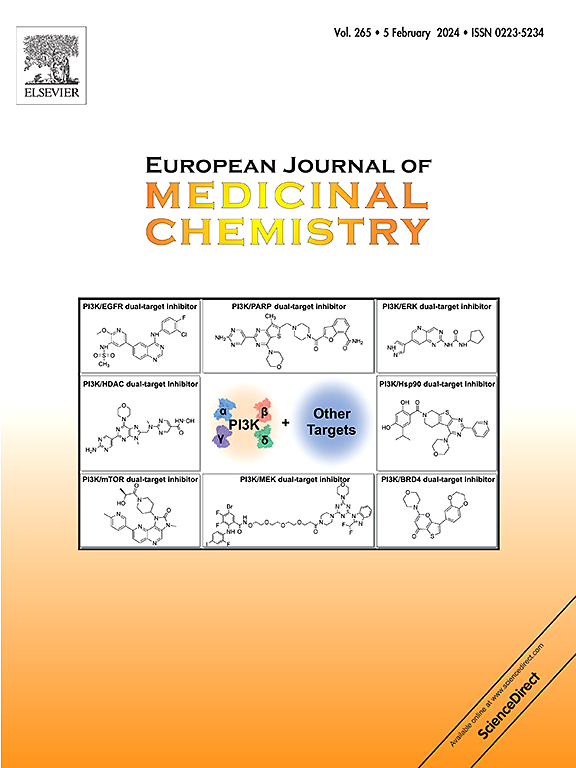Corrigendum to “Novel Nitric oxide-releasing derivatives of pyranocarbazole as antitumor agents: Design, synthesis, biological evaluation, and nitric oxide release studies” [Eur. J. Med. Chem. 244 (2022) 114832 / EJMECH-D-22-01635R2]
IF 6
2区 医学
Q1 CHEMISTRY, MEDICINAL
引用次数: 0
Abstract
The authors regret < that there was an error in Fig. 4, owing to the negligence of the authors when generating the figures of this paper. Colony formation assay, the gold standard, is generally used to regulate the long-term effects of cytotoxic agents on the proliferation of cancer cells in vitro. In this experiment, MDA-MB-231 cells were used to evaluate the effect of compounds on cell colony formation. As shown in Fig. 4, compound 7a could inhibit cell colony formation in a dose-dependent manner starting from a concentration of 0.25 μM, with a stronger effect than the positive control compound CZN-13. CZN13 began to significantly inhibit cell colony formation only at a concentration of 5 μM. The results suggest that 7a inhibits cancer cell proliferation. There were no cells in the clone images at concentrations of 0.25 μM 7a and 5 μM CZN-13. So the two images look almost the same. The author accidently pasted the same image when during figure combining process. Hereby corrects the image of CZN-13 at 5 μM.
- Download: Download high-res image (531KB)
- Download: Download full-size image
更正:"作为抗肿瘤药物的吡喃咔唑新型一氧化氮释放衍生物:设计、合成、生物学评价和一氧化氮释放研究" [Eur. J. Med. Chem. 244 (2022) 114832 / EJMECH-D-22-01635R2] 的更正
本文章由计算机程序翻译,如有差异,请以英文原文为准。
求助全文
约1分钟内获得全文
求助全文
来源期刊
CiteScore
11.70
自引率
9.00%
发文量
863
审稿时长
29 days
期刊介绍:
The European Journal of Medicinal Chemistry is a global journal that publishes studies on all aspects of medicinal chemistry. It provides a medium for publication of original papers and also welcomes critical review papers.
A typical paper would report on the organic synthesis, characterization and pharmacological evaluation of compounds. Other topics of interest are drug design, QSAR, molecular modeling, drug-receptor interactions, molecular aspects of drug metabolism, prodrug synthesis and drug targeting. The journal expects manuscripts to present the rational for a study, provide insight into the design of compounds or understanding of mechanism, or clarify the targets.

 求助内容:
求助内容: 应助结果提醒方式:
应助结果提醒方式:


